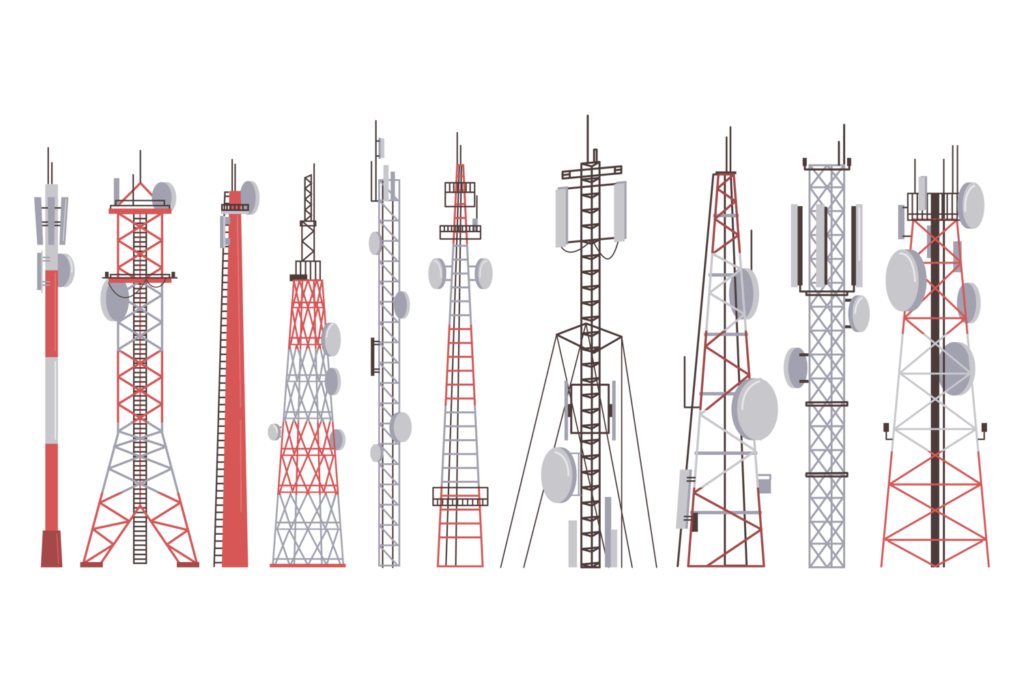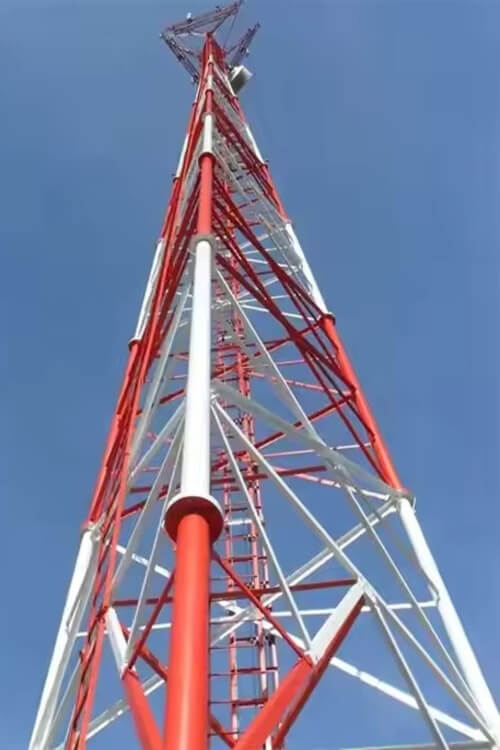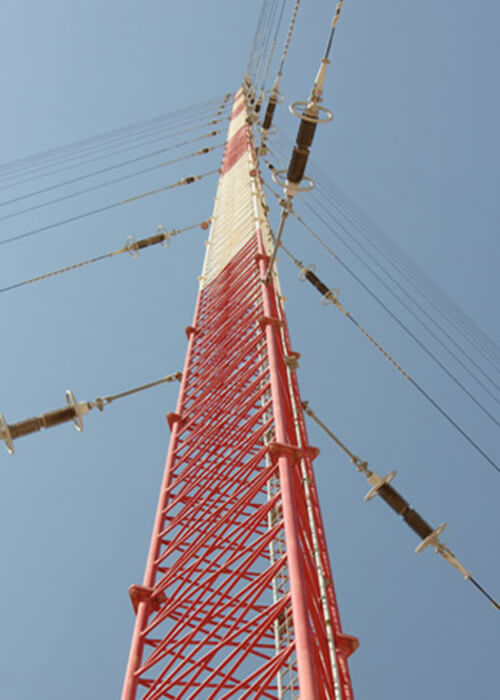Telecommunication Towers


Self-Supported Angular (Lattice) Type 4 Leg Telecom Towers
Self-Supported Angular (Lattice) Type 4-Leg Telecom Towers
Self-Supported Angular (Lattice) Type 4 Leg Telecommunication Towers are robust, high-strength structures. Also their design is to support heavy telecom equipment, antennas, and microwave dishes.
Furthermore with a lattice design and four-leg foundation, these towers provide excellent stability and load-bearing capacity. This making them ideal for a wide range of telecom applications. Moreover engineered for durability and ease of installation, these towers are commonly used for long-term telecom infrastructure in both urban and remote areas, ensuring reliable network connectivity and communication.
Design Standards;
- ANSI / TIA-222-H
- ANSI / TIA-222-G
- 3-second gust wind speed
- North American (EIA, UBE, CSA) Standards
- European (Eurocode)

Self-Supported Tubular Type 3 Leg Telecom Towers
Self-Supported Tubular Type 3-Leg Telecom Towers
Self-Supported Tubular Type 3-Leg Telecom Towers feature a sleek, tubular design that offers strength and stability for supporting telecom equipment like antennas and microwave dishes.
Furthermore, with a three-leg configuration, these towers are engineered for high wind resistance and optimal load distribution.
They are commonly used in both urban and remote locations, providing reliable and long-lasting solutions for telecom networks.
Also 3 Leg Tubular Towers known for their durability and ease of installation, tubular towers are an efficient choice for expanding communication infrastructure.
Please feel free to contact us to get more information.

Guyed Mast
Guyed Mast
A Guyed Mast is a tall, slim telecom structure. It has supports by tensioned guy wires anchored to the ground using turnbuckles. Turnbuckles allow precise adjustment of the tension in the guy wires, ensuring the mast remains stable and secure under varying loads and weather conditions.
Also ideal for locations requiring high antennas but with limited load capacity, these masts provide cost-effective solutions for broadcasting, telecommunications, and meteorological applications.
Due to their lightweight design and minimal material usage, they are easy to install and maintain, makes them a choice for rural and remote areas.
Additionally, guyed masts are known for their flexibility and stability, ensuring reliable signal transmission.

Radar Towers
Radar Towers
Radar towers are special structures, their design support radar systems. Also for air traffic control, weather monitoring, and military applications.
Also Radar Towers has stability and durability. Furthermore these towers provide an elevated platform for radar antennas, ensuring clear signal transmission over long distances.
Typically construction is from steel or other sturdy materials. Radar towers are engineering to withstand harsh environmental conditions and provide reliable performance in both urban and remote locations.
Their design ensures optimal radar coverage, making them essential for monitoring and communication systems.

Camouflaged Tower
Camouflaged Tower
Camouflage towers for GSM networks are specially designed structures that blend seamlessly into their surroundings, reducing visual impact in sensitive areas such as urban environments, parks, and residential neighborhoods.
These structures feature camouflage materials crafted from Fiberglass, PVC Fabric or PTFE, ensuring minimal to no signal losses while undergoing testing to verify their resistance against signal degradation.
Secondly MTS Tower in-house design capabilities meet customer-specific requirements, our structures are manufacture in-house, adhering to the highest standards of quality. Also Hot Dip Galvanization for enhance the durability.
Also these towers are built to support GSM antennas and equipment while being disguised as trees, flagpoles, or other common objects.
Moreover Camouflaged towers offer the same reliability and performance as traditional telecommunication towers. But with an aesthetic design that preserves the landscape’s natural or architectural beauty, making them an ideal choice for maintaining network connectivity without compromising on appearance.